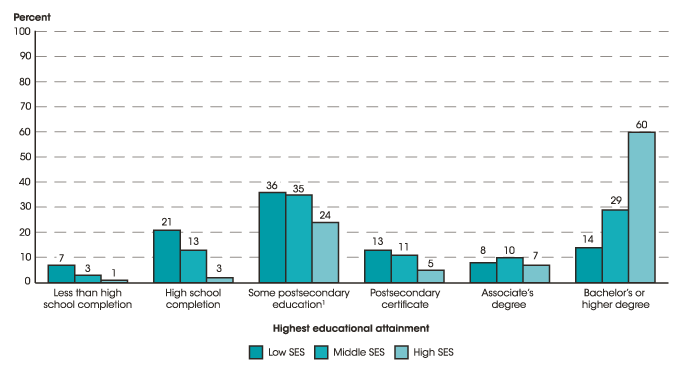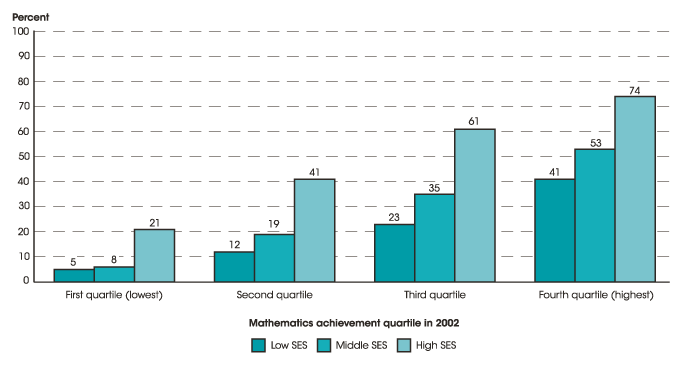By Lauren Musu-Gillette
Obtaining higher education can be an important step towards better occupational and economic outcomes. Lower levels of educational attainment are associated with higher unemployment rates and lower earnings. Although an increasing number of students have enrolled in postsecondary institutions over the last several decades, there are still differences in the characteristics of students who complete various levels of postsecondary education.
One particularly important issue to explore is differences in educational attainment by socioeconomic status (SES) to investigate the opportunities for social mobility that education can provide. Recently, NCES published a spotlight indicator on this topic to be included in the annual Condition of Education report. The report uses data from the Education Longitudinal Study of 2002 (ELS:2002), which surveyed students at different points during their secondary and postsecondary years. Students were first surveyed in 2002 when they were sophomores in high school. Then, their highest level of education was assessed ten years later, in 2012.
Percentage distribution of highest level of educational attainment of spring 2002 high school sophomores in 2012, by socioeconomic status (SES)

1 Includes education at any type of postsecondary institution, but with no earned postsecondary credential.
SOURCE: U.S. Department of Education, National Center for Education Statistics, Education Longitudinal Study of 2002 (ELS:2002). See Digest of Education Statistics 2014, table 104.91.
Several key findings highlight differences in educational attainment by SES. For example:
- Seven percent of low-SES students had not completed high school by 2012, greater than the percentages of middle- and high-SES students who had not completed high school by 2012;
- By 2012, Fourteen percent of low-SES students who were high school sophomores in 2002 had earned a bachelor’s or higher degree, smaller than 29 percent of middle-SES students and 60 percent of high-SES students who earned a bachelor’s or higher degree; and
- Compared to high-SES students, smaller percentages of low- and middle-SES students who performed in the highest quartile of math achievement during their sophomore year of high school went on to complete a bachelor’s degree by 2012.
Percentage of spring 2002 high school sophomores who earned a bachelor's degree or higher by 2012, by socioeconomic status (SES) and mathematics achievement quartile in 2002

SOURCE: U.S. Department of Education, National Center for Education Statistics, Education Longitudinal Study of 2002 (ELS:2002). See Digest of Education Statistics 2014, table 104.91.
The following video describes additional findings from the report: